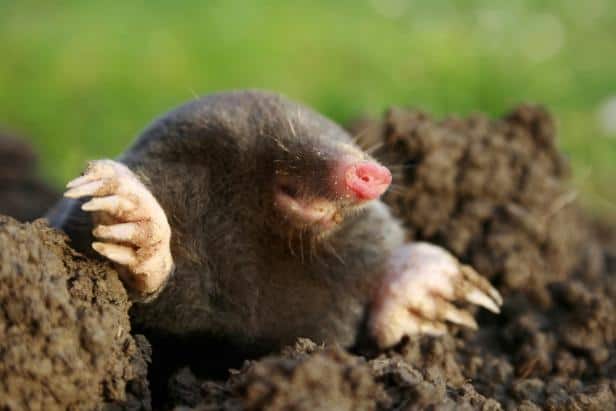Many pests can invade your yard and damage your landscaping and lawn, but none do the job as perfectly as the mole. Moles are insectivores, choosing to feed on mostly insects. They are commonly confused with rodents like mice and voles. Moles are generally around 6-8 inches long; they have soft brown to dark gray fur and long snouts that protrude about an inch. The most distinguishing feature of moles, however, is their oversized front feet that have paddle-shaped hands and large, sharp claws.
You are not likely to actually see moles since they spend most of their time underground only rarely making an above-ground appearance, but you are very likely going to notice the damages they leave in their wake. Annuals, lawns, and gardens are most often the victim of a mole infestation; but these are not their targets.
What DO Moles Eat?
Moles’ favorite meal includes earthworms, grubs, snails, spiders, small animals, and other insects. Because moles require a lot of food for energy, they eat more than their one-pound body weight in food each day. Moles will also consume around 60%-100% of their body weight in earthworms, grubs, and insects every day.
SIGNS OF A MOLE INFESTATION
The most likely sign that you will notice of a mole infestation is the mounds they create. They tunnel under lawns and gardens to create nesting burrows and pathways to lead them to food sources. The mounds are only a few inches high, but this is a poor indicator of the actual damage below the surface. Even though the tunnels are created beneath the ground, over time, they will become visible above ground, appearing as raised lines in your lawn.
If your lawn has a mole problem, contact us today for proven solutions!


